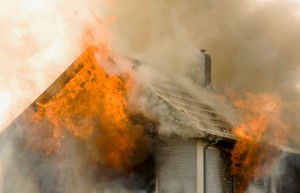Every so often, a residential fire will occur with no obvious cause. Fire investigators sift through the ashes and study the burned-out or fire-damaged structure to look for the reason behind the fire, and many times, they can find the origin of the fire as well as its probable cause, such as improper maintenance of the fireplace and chimney system and improper or careless usage of the heating system. Although fire investigators can generally always determine the origin of the fire, they cannot always find concrete evidence of what exactly caused the fire. In these situations, pyrolysis is usually the cause due to improper installation of fireplaces, solid-fuel stoves, fireplace inserts, or furnaces, which is why Aelite Chimney Specialties strongly recommends professional installation of these heating appliances. We know that many of our customers have never heard of pyrolysis, so we would like to take this opportunity to tell you more about this dangerously combustible phenomenon that could start a devastating house fire when given the right circumstances.

What exactly is pyrolysis?
According to Sintra Engineering, a Canadian forensic engineering firm, the definition of pyrolysis is chemical decomposition caused by heat. When combustible materials are exposed to high temperatures for a prolonged period of time, they begin to dry out, break down, and eventually burn. Installing fireplaces, solid-fuel stoves, fireplace inserts, and furnaces with inadequate clearances are the main reason behind pyrolysis. Not requiring a burning flame to ignite a fire, pyrolysis does need certain conditions to be present for it to occur.
What are the special conditions needed for pyrolysis to develop?
Again, pyrolysis does not need a burning fire to begin developing; however, the following conditions can cause this process to occur:
- a heat source over 194 degrees Fahrenheit
- proximity of a combustible to the heat source
- prolonged time of exposure to heat
- limited air flow
How long does the pyrolysis process take to ignite a fire?
The entire process of pyrolysis takes a lot of time, possibly even years. Since there are no physical signs of pyrolysis developing, it is extremely important to ensure all of your heating appliances are up to codes regarding the correct clearances.
What is the best way to avoid pyrolysis from ever occurring in my home?
Having all of your heating appliances professionally installed to ensure the minimum clearances are met is the best way to prevent pyrolysis from being the cause of your house experiencing a damaging fire. When the necessary clearances to the structure of your house are not met, combustibles on the other sides of your chimney walls are subjected to the pyrolysis process. If you experience a chimney fire due to large deposits of creosote, the intensely high temperatures of the fire will speed up the pyrolysis process. This is one of the reasons why it is crucial to have your chimney professionally cleaned and inspected every year. Our expert sweeps at Aelite Chimney Specialties can immediately detect improper clearances and repair this problem to keep you, your family, and your home safe.
Have more questions about pyrolysis? Contact Aelite Chimney Specialties or click here today to ask our experienced staff what you need to know.
